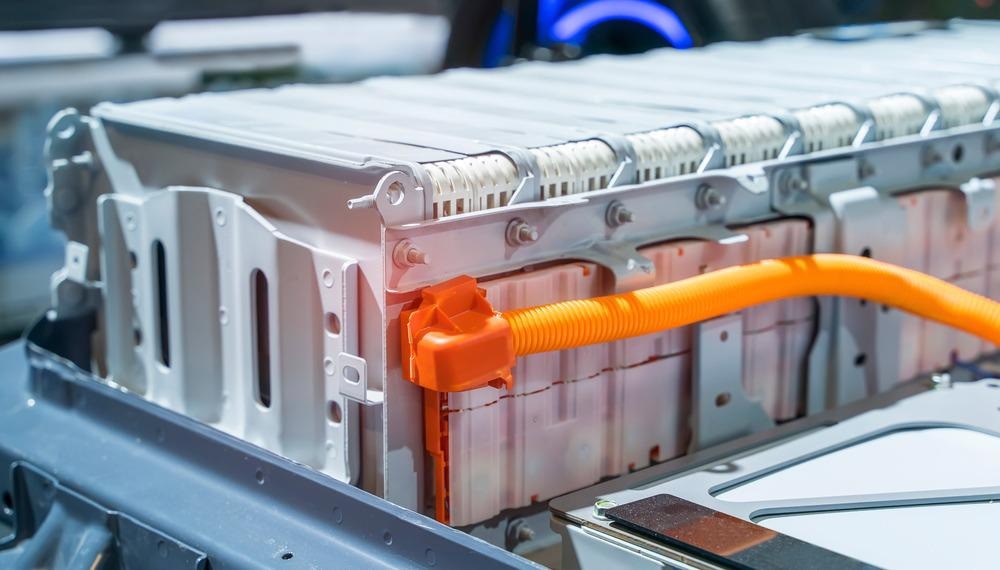Writing in the journal ACS Energy Letters, a team of researchers has investigated the current status of lithium-ion battery recycling regulations across the world and their implications.

Study: The Regulatory Environment for Lithium-Ion Battery Recycling. Image Credit: asharkyu/Shutterstock.com
Lithium-ion batteries are increasingly being implemented in devices across a wide range of industries. The recycling of lithium-ion battery elements due to resource scarcity and the growth in demand for these devices is likely to play an increasing role in the future.
Recycling Lithium-ion Batteries
Lithium-ion batteries are a key technology that is helping decarbonize industries and move the world toward net-zero emissions. Batteries are commonly used in consumer products such as laptops, smartphones, and media centers. The growth in recent demand for lithium-ion batteries has been down to their use in electric and hybrid vehicles, which are increasingly replacing internal combustion engine vehicles.
The valorization of waste lithium-ion batteries and their materials through recycling has gained significant attention in recent years. The recycling rate of lithium-ion batteries is still low at under 5%, however. The main reasons for this are cost and the complexity of recycling methods.
Three major methods are used to recycle lithium-ion batteries. Direct recycling, pyrometallurgy, and hydrometallurgy. Each method has advantages and disadvantages in terms of labor, cost, and the use of reagents and energy.
The cost of battery recycling strongly depends on its scale. Studies have indicated that hydrometallurgy is the most economical method (at a capacity of >20,000 mT) for vehicle battery recycling. Pyrometallurgy and direct recycling have similar costs for lithium-ion battery recovery. Additional cost factors include the development of local capacity and new technologies.
The Role of Regulations
The study published in ACS Energy Letters has explored the role of regulation in battery recycling, focusing mainly on regulatory environments in China, the EU, and the USA as these are major economies that impact the lithium-ion battery market. Regulations are likely to play a key role in the sector as it grows, to help realize the environmental and economic benefits of lithium-ion battery recycling.
The European Union
The EU has several recycling policy frameworks. Whilst there are no specific frameworks for lithium-ion battery recycling currently, progress is being made in the bloc with draft resolutions. Currently proposed regulations provide comprehensive frameworks for the sale, use, design, and recycling of lithium-ion batteries. The responsibilities of users, recyclers, and companies are set forth in the proposed regulations.
Manufacturers must provide battery data covering performance and durability, and additionally they are responsible for the provenance of materials. Another provision in currently proposed EU regulations is the concept of “battery passports” which help to inform consumers on contents, materials origin, and the battery’s environmental impact. Manufacturing and reuse standards for batteries are being established under newly proposed rules.
However, individual countries in the EU and Europe have differing policies. The UK lacks explicit regulations for lithium-ion battery recycling.
The USA
In the USA, federal, state, and local governments each have authority over the disposal and recycling of batteries. As of July 2020, there are no explicit US federal policies that cover lithium-ion battery recycling. Senate bills have been proposed in recent years.
Two federal laws are relevant to lithium-ion battery recycling. The Mercury-Containing and Battery Management Act requires companies to accept and recycle used batteries and could act as a template for future lithium-ion battery recycling. The second law is the Resource Conservation and Recovery Act, which specifies legal frameworks for the safe disposal of hazardous and non-hazardous solid waste. Current legal discussions in the USA are concentrating on possible frameworks for future lithium-ion battery recycling.
China
In China, there have been several regulations enacted to handle hazardous waste that are relevant to lithium-ion battery recycling. Whilst early regulatory drafts concentrated on the safe disposal of lead-acid batteries, the growing production of lithium-ion batteries has facilitated their inclusion in regulations. Regulations in China have been extended to cover multiple aspects of manufacture, collection, and recycling, producing a comprehensive used battery management system.
Additionally, China has implemented regulations to control the import of waste from other countries. Traditionally, waste that could otherwise be recycled (such as battery waste) is exported from countries like the USA or European nations to those with lower labor costs. This ban could provide an impetus for other countries to develop recycling capabilities.
The Future
Regulations are likely to play a key role in the future of lithium-ion battery recycling, which is vitally important for the sector as it reduces resource scarcity and improves sustainability. As the demand for batteries grows, so must the political will to enact proper legislation covering the industry.
Further Reading
Bird, R et al. (2022) The Regulatory Environment for Lithium-Ion Battery Recycling [online] ACS Energy Lett. 2022 (7) pp. 736-740 | pubs.acs.org. Available at: https://pubs.acs.org/doi/10.1021/acsenergylett.1c02724
Disclaimer: The views expressed here are those of the author expressed in their private capacity and do not necessarily represent the views of AZoM.com Limited T/A AZoNetwork the owner and operator of this website. This disclaimer forms part of the Terms and conditions of use of this website.